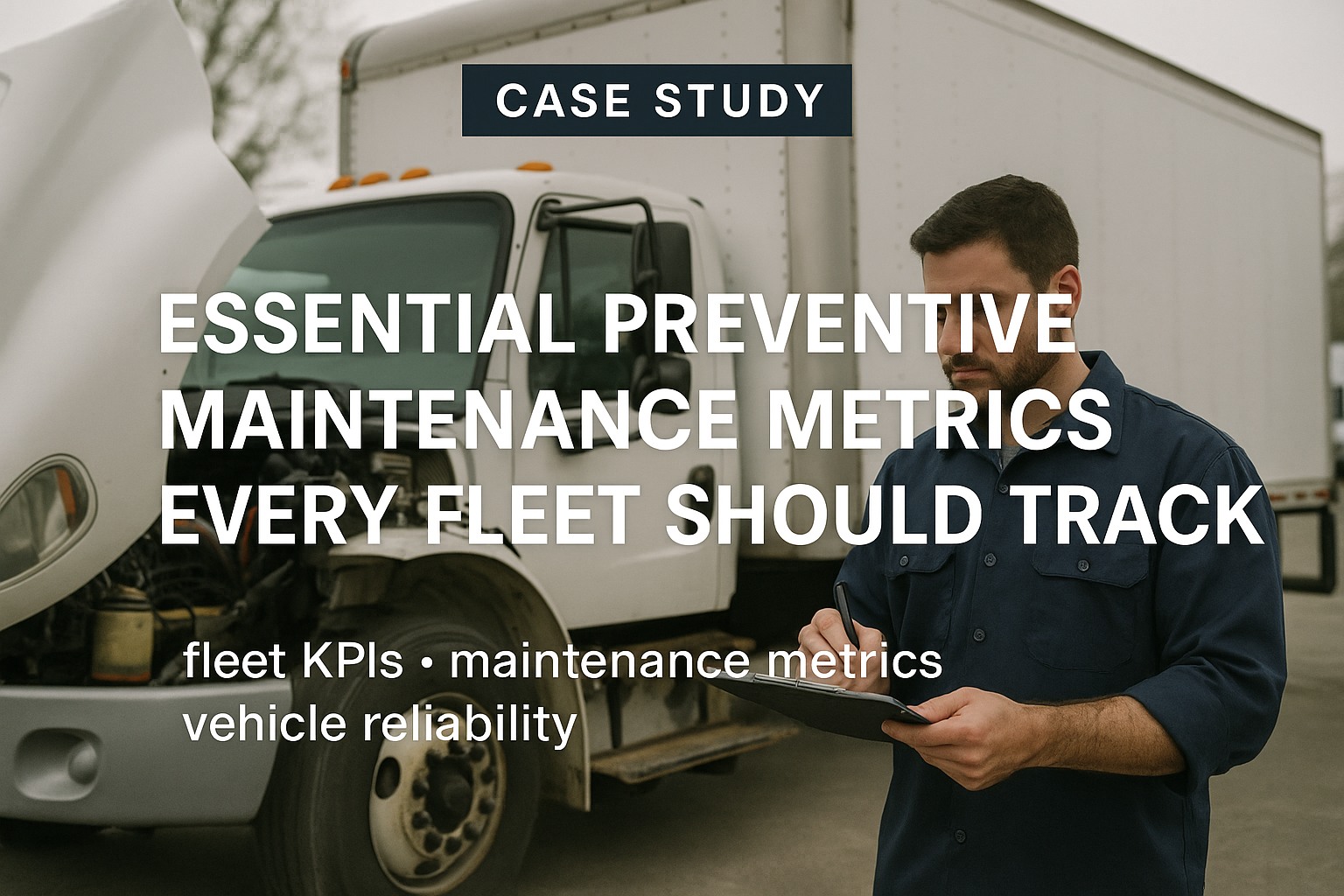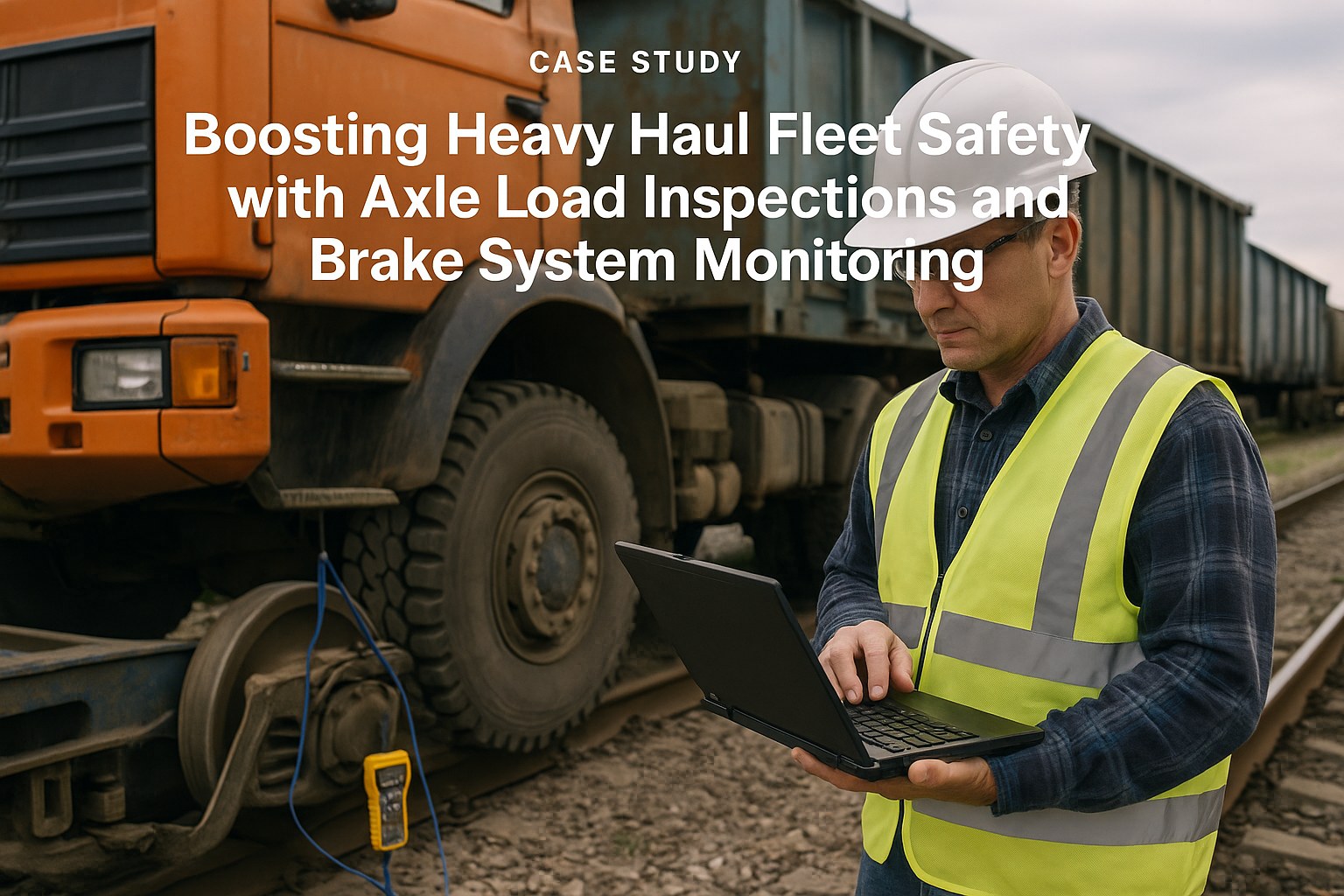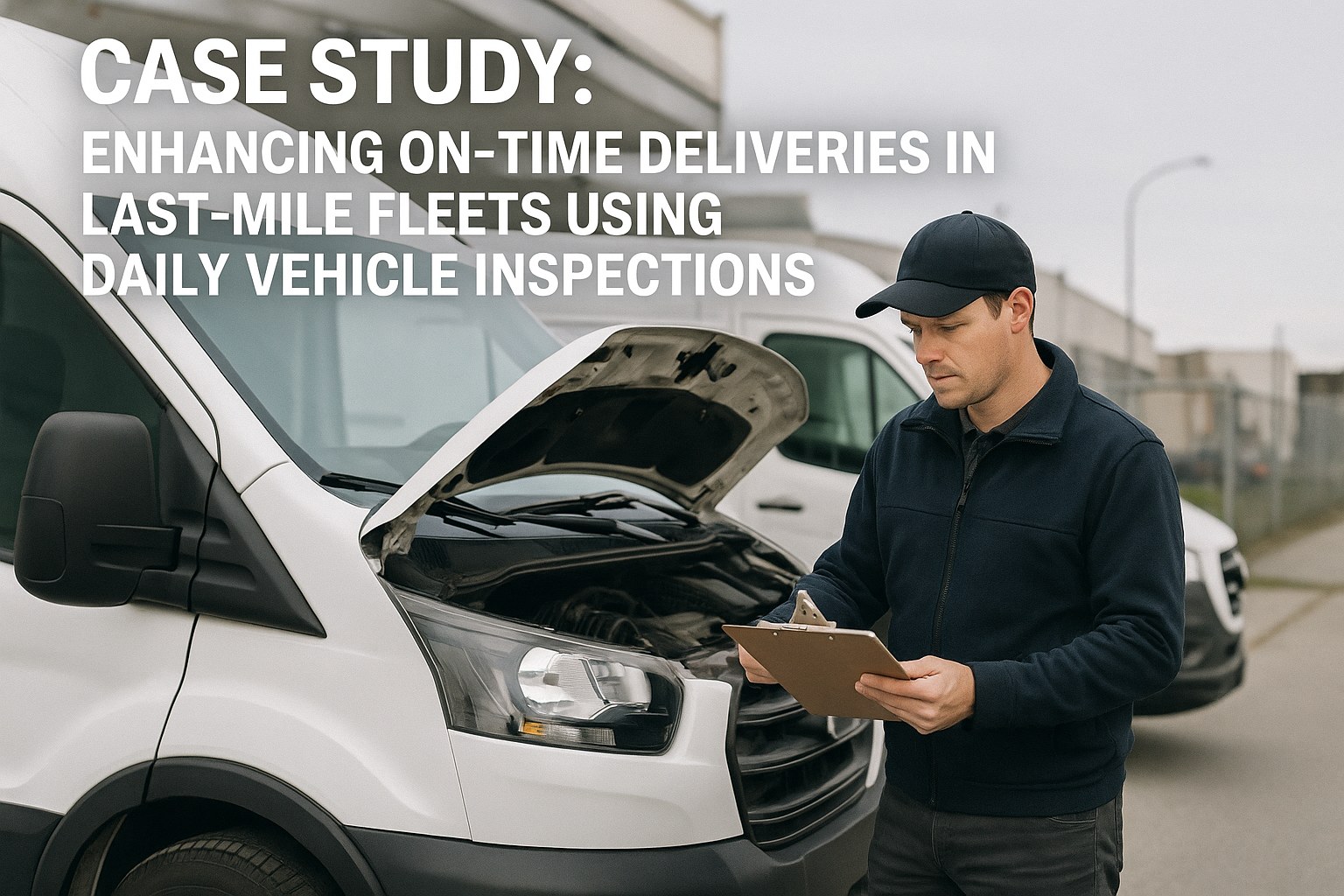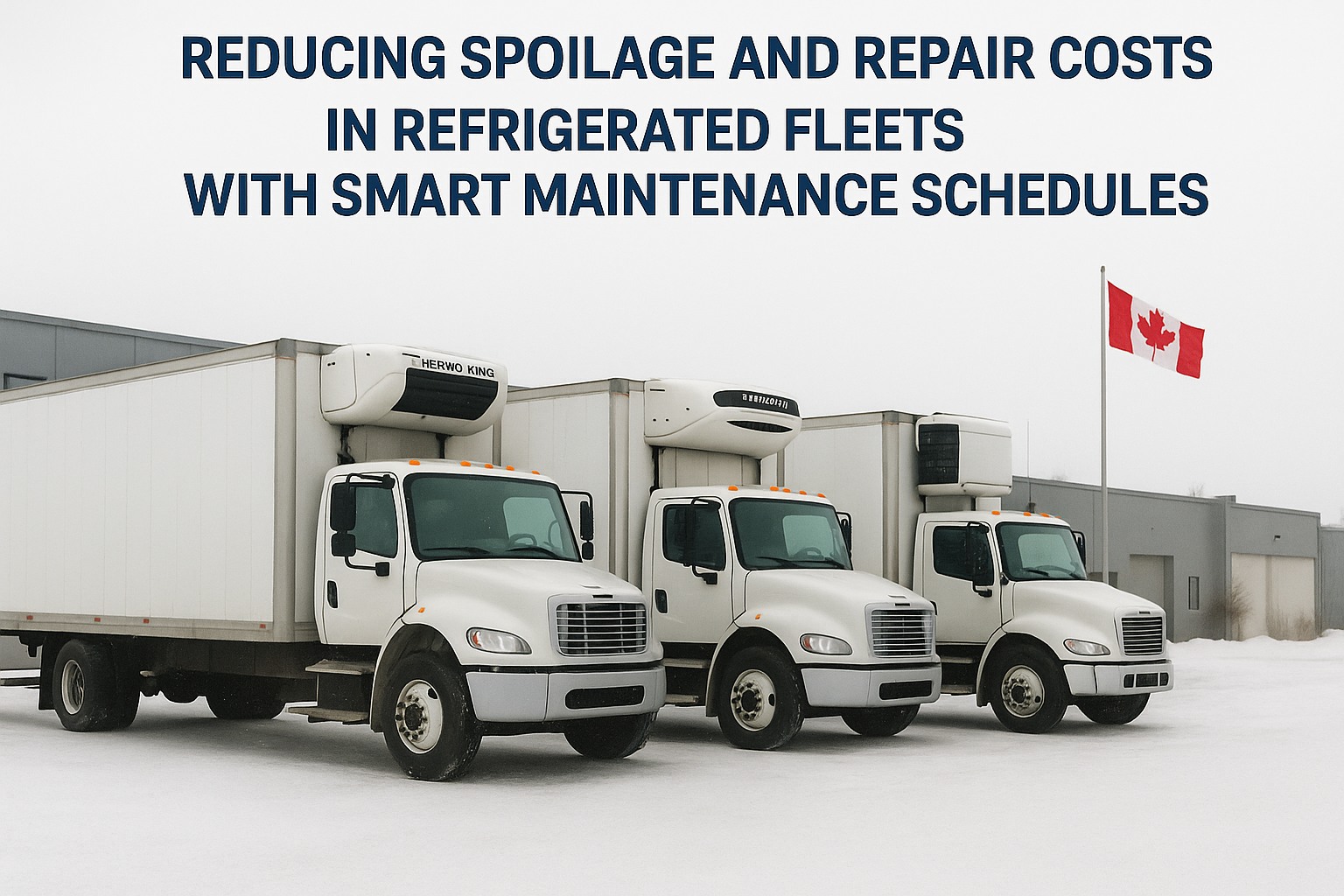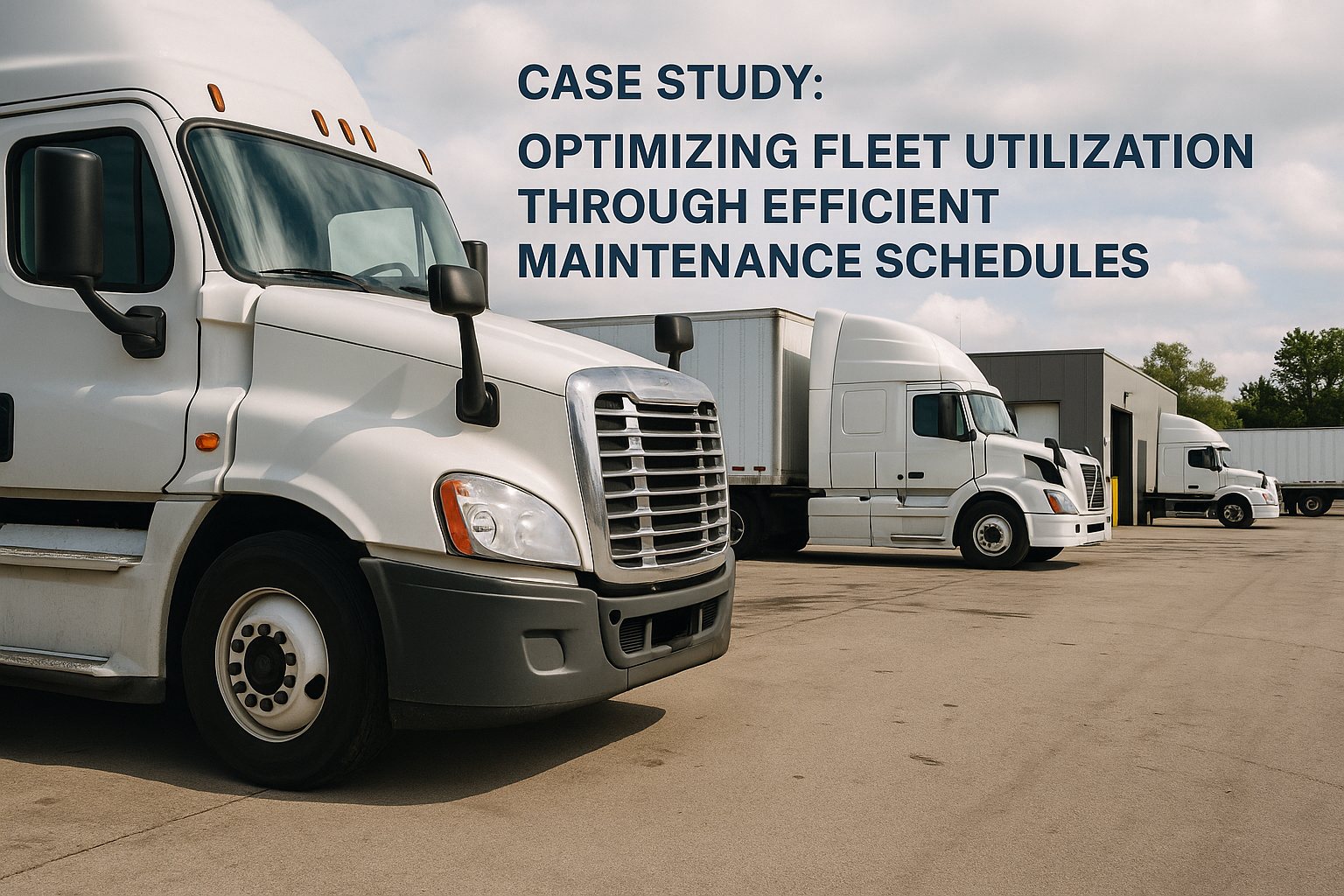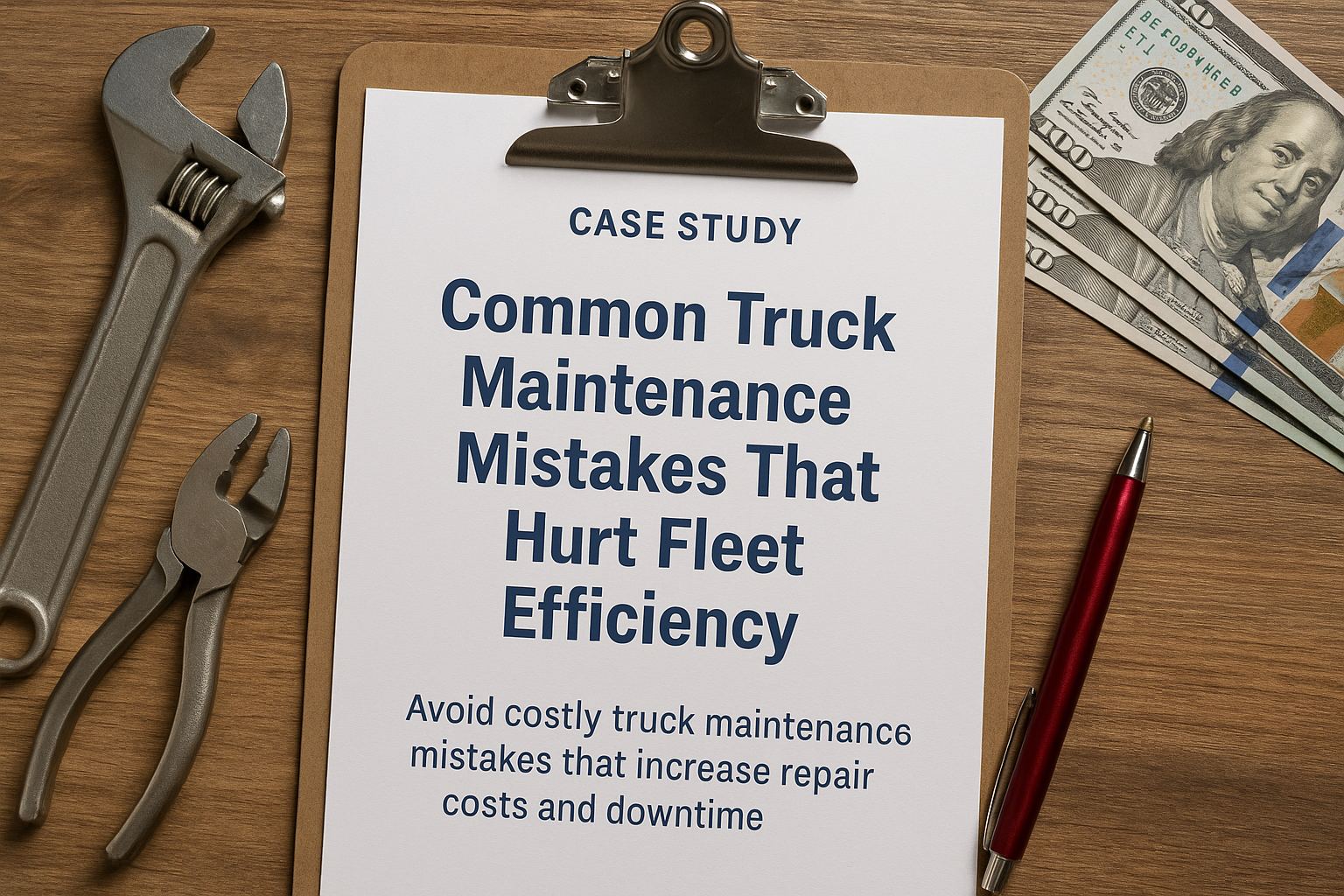In 2024, fleet operators tracking comprehensive preventive maintenance metrics achieved 94% vehicle reliability rates while reducing maintenance costs by 42%, yet surprisingly, only 31% of US fleets monitor the full spectrum of essential KPIs needed for optimal performance. The difference between industry leaders and struggling operations often comes down to which metrics they track, how they analyze the data, and most importantly and how they act on the insights gained. This comprehensive guide reveals how three major fleets transformed their operations by implementing data-driven maintenance strategies focused on the right performance indicators.
The evolution of fleet maintenance from reactive repairs to predictive optimization represents one of the most significant shifts in transportation management. Much like healthcare's transition to preventive medicine through vital sign monitoring, modern fleet operations require continuous measurement of critical health indicators to prevent catastrophic failures. The parallels are striking: both industries deal with complex systems where early detection saves lives and money, both require balancing immediate needs with long-term health, and both benefit tremendously from data-driven decision making.
Consider the financial impact: A single unexpected breakdown costs an average of $760 per day in lost revenue, plus $450 in emergency repairs, not including the immeasurable cost of damaged customer relationships. Yet fleets implementing comprehensive metric tracking report 73% fewer breakdowns, 89% improved first-time fix rates, and annual savings exceeding $125,000 per 100 vehicles. This guide explores how industry leaders achieve these remarkable results through strategic metric selection and analysis.
The Foundation: Understanding Fleet Performance Metrics
Effective preventive maintenance begins with understanding which metrics truly matter for fleet performance. While many operations drown in data, successful fleets focus on key performance indicators that directly impact reliability, cost, and customer satisfaction. The challenge lies not in collecting data—modern telematics systems generate millions of data points daily—but in identifying which metrics drive actionable insights.
Essential Metric Categories:
- Reliability Indicators: MTBF (Mean Time Between Failures), vehicle availability percentage, breakdown frequency
- Efficiency Metrics: MTTR (Mean Time To Repair), first-time fix rate, technician productivity
- Cost Drivers: Cost per mile, maintenance cost per vehicle, parts inventory turnover
- Compliance Measures: PM completion rate, inspection pass rate, DOT violation frequency
- Predictive Indicators: Component wear rates, fault code patterns, driver behavior scores
- Customer Impact: On-time delivery rate, service interruptions, customer complaints related to vehicle issues
The interconnected nature of these metrics creates a comprehensive picture of fleet health. Like a medical professional monitoring multiple vital signs, fleet managers must understand how changes in one metric cascade through the entire operation. A declining PM completion rate, for instance, directly impacts breakdown frequency, which affects customer satisfaction and ultimately drives up total cost of ownership.
Case Study 1: TransPacific Logistics' Metric Revolution
TransPacific Logistics, operating 350 trucks across 15 states, faced a reliability crisis in 2023. With vehicle availability hovering at 78% and customer complaints mounting, they implemented a comprehensive metric tracking system that would transform their maintenance operations and set new industry benchmarks for reliability.
The Challenge
Before implementing comprehensive metric tracking, TransPacific struggled with fragmented data and reactive maintenance practices. Their challenges included:
- No standardized method for tracking vehicle reliability across different locations
- Maintenance decisions based on intuition rather than data
- Average of 47 breakdowns per month across the fleet
- Customer on-time delivery rate of only 84%
- Maintenance costs increasing 15% year-over-year with no clear understanding why
The Solution
TransPacific implemented a three-tiered metric system that provided visibility from individual component performance up to fleet-wide trends. Their approach revolutionized how they thought about and executed preventive maintenance.
Tier 1: Real-Time Operational Metrics
The company deployed IoT sensors and integrated telematics to capture real-time vehicle health data. Key metrics included engine hours between services, fault code frequency by system, tire pressure variance from optimal, and fuel efficiency degradation patterns. This immediate visibility allowed proactive interventions before minor issues became major failures.
Tier 2: Maintenance Performance Indicators
TransPacific established rigorous tracking of maintenance execution metrics: PM completion within scheduled windows (target: 95%), average repair time by job type, parts availability at point of service, and technician productivity scores. These metrics revealed inefficiencies in their maintenance processes that were costing thousands in unnecessary downtime.
Tier 3: Strategic Performance Metrics
Long-term metrics focused on trends and predictive insights: component MTBF by manufacturer and model, seasonal breakdown patterns, cost per mile trends by vehicle age, and reliability scores by route difficulty. This strategic view enabled better capital planning and replacement decisions.
Results and ROI
Within 18 months of implementing comprehensive metric tracking, TransPacific achieved remarkable improvements that exceeded all projections:
- Reliability Transformation: Vehicle availability increased from 78% to 94.7%, exceeding industry benchmarks
- Breakdown Reduction: Monthly breakdowns decreased from 47 to 15, a 67% improvement
- Cost Optimization: Maintenance cost per mile reduced by 38% through predictive interventions
- Customer Satisfaction: On-time delivery improved to 97.3%, earning preferred carrier status with key accounts
- Financial Impact: Total savings of $2.3M annually, with implementation costs recovered in 7 months
Case Study 2: Coastal Freight's Predictive Metric Journey
Coastal Freight, a regional carrier with 175 vehicles specializing in refrigerated transport, leveraged advanced analytics and machine learning to transform raw metrics into predictive insights that revolutionized their maintenance strategy.
The Innovation Approach
Coastal Freight went beyond traditional metric tracking by implementing predictive analytics that identified failure patterns before they impacted operations. Their system analyzed millions of data points daily, creating probability scores for component failures and optimizing maintenance timing for maximum efficiency.
Key innovations included algorithms predicting component failure 30-60 days in advance, dynamic PM scheduling based on actual wear rather than fixed intervals, automated parts ordering triggered by predictive maintenance alerts, and real-time route optimization considering vehicle health scores. Their integration of weather data with vehicle metrics to predict stress-related failures proved particularly valuable for refrigerated transport.
Building Your Metric-Driven Maintenance Program
Creating a world-class preventive maintenance program requires more than just collecting data—it demands a systematic approach to metric selection, analysis, and action. Based on insights from industry leaders, here's a comprehensive framework for building your metric-driven maintenance strategy.
Step 1: Metric Selection and Prioritization
Not all metrics are created equal. Successful fleets focus on KPIs that directly impact their specific operational goals and challenges. Start by identifying your primary business objectives and work backward to determine which metrics best indicate progress toward those goals.
Essential Metrics Checklist:
- Define no more than 15-20 core metrics to avoid analysis paralysis
- Ensure each metric has a clear owner responsible for improvement
- Establish baseline measurements before implementing changes
- Create both leading indicators (predictive) and lagging indicators (historical)
- Align metrics with compensation and recognition programs
- Review and adjust metric selection quarterly based on business evolution
Step 2: Data Collection Infrastructure
Reliable metrics require reliable data. Implement systems that capture information automatically and accurately, minimizing manual entry errors. Essential infrastructure includes telematics integration for real-time vehicle data, CMMS platforms for maintenance activity tracking, and mobile apps for technician data entry. Automated fuel and parts purchasing system integration ensures comprehensive cost tracking while API connections with customer systems provide service level insights.
Step 3: Analysis and Visualization
Raw data without analysis is merely noise. Successful fleets transform metrics into actionable insights through sophisticated analysis and intuitive visualization. Implement dashboards that highlight exceptions and trends, use predictive analytics to identify emerging patterns, and create automated alerts for metrics exceeding thresholds. Regular metric review meetings ensure insights drive action, while root cause analysis for negative trends prevents recurring issues.
Step 4: Action and Continuous Improvement
The true value of metrics lies in the actions they inspire. Establish clear protocols for responding to metric indicators, create improvement plans for underperforming areas, and celebrate successes when metrics improve. Document lessons learned from metric-driven decisions and share best practices across the organization to create a culture of continuous improvement.
Advanced Metric Strategies for Fleet Excellence
Leading fleets are pushing beyond basic metric tracking to achieve unprecedented levels of performance. These advanced strategies separate industry leaders from those merely maintaining the status quo.
Predictive Metric Modeling
Modern fleets leverage artificial intelligence and machine learning to transform historical metrics into predictive insights. By analyzing patterns across thousands of vehicles and millions of miles, AI systems identify subtle indicators that human analysts might miss. This approach enables component failure prediction with 85-95% accuracy, optimal PM scheduling based on actual wear patterns, and driver behavior correlation with vehicle health outcomes.
Cross-Functional Metric Integration
The most sophisticated programs integrate maintenance metrics with broader business indicators. This holistic approach reveals hidden correlations between maintenance performance and customer satisfaction, driver retention and vehicle reliability, and route characteristics and maintenance costs. Understanding these relationships enables optimization across the entire operation, not just the maintenance department.
Real-Time Metric Response Systems
Leading fleets have moved from periodic metric reviews to real-time response systems. When key metrics exceed thresholds, automated systems trigger immediate actions: scheduling preventive maintenance before failures occur, rerouting vehicles showing early failure indicators, and dispatching mobile repair units to prevent breakdowns. This proactive approach minimizes the impact of potential failures on operations.
ROI Analysis: The Financial Impact of Metric Excellence
Comprehensive metric tracking delivers compelling returns on investment that extend far beyond simple cost savings. Analysis of 75 fleets implementing advanced metric programs reveals consistent financial benefits across multiple dimensions.
Average Annual Benefits per 100 Vehicles:
- Reduced Breakdown Costs: $567,000
- Improved Labor Efficiency: $423,000
- Optimized Parts Inventory: $234,000
- Extended Vehicle Life: $789,000
- Customer Retention Value: $1,250,000
- Insurance Premium Reduction: $187,000
- Total Annual Benefit: $3,450,000
Against an average implementation cost of $450,000 and annual operating expenses of $125,000, the ROI exceeds 500% in the first year. These figures don't include intangible benefits like improved safety records, enhanced company reputation, and reduced stress on management teams from fewer emergency situations.
Common Pitfalls in Metric Implementation
Even well-designed metric programs can fail without proper implementation. Understanding common pitfalls helps ensure your metric initiative delivers promised results.
Top 5 Metric Implementation Failures:
- Metric Overload: Tracking too many KPIs dilutes focus and overwhelms teams. Limit core metrics to what truly drives business results.
- Lack of Action Plans: Metrics without clear response protocols become mere reporting exercises. Define specific actions for metric thresholds.
- Poor Data Quality: Inaccurate or incomplete data undermines credibility. Invest in automated data collection and validation.
- Missing Context: Raw numbers without context mislead. Always consider seasonality, fleet changes, and external factors.
- Insufficient Training: Teams must understand both how to read metrics and why they matter. Invest heavily in education.
Future-Proofing Your Metric Strategy
The fleet industry continues evolving rapidly, with new technologies and regulations constantly emerging. Successful metric strategies must adapt to remain relevant and valuable.
Emerging trends shaping the future of fleet metrics include electric vehicle performance indicators requiring new benchmarks, autonomous vehicle readiness scores becoming critical, and environmental impact metrics driving compliance and customer decisions. Predictive health scoring using AI reaches new accuracy levels while blockchain verification ensures metric authenticity for regulatory compliance.
Your Roadmap to Metric-Driven Maintenance Excellence
Achieving world-class fleet performance through metric-driven maintenance isn't just possible—it's essential for competitive survival. The case studies and strategies outlined in this guide provide a proven roadmap for transformation. Success requires commitment to data-driven decision making, investment in proper infrastructure and training, and willingness to act on metric insights even when they challenge conventional wisdom.
The journey from reactive repairs to predictive optimization begins with tracking the right metrics. By focusing on KPIs that truly matter—vehicle reliability, maintenance efficiency, and cost performance—fleets can achieve the remarkable results demonstrated by industry leaders: 94% vehicle availability, 67% reduction in breakdowns, and millions in annual savings.
The time for intuition-based maintenance has passed. In today's competitive landscape, only fleets that harness the power of comprehensive metrics will thrive. Start your transformation today by identifying your core KPIs, implementing robust tracking systems, and creating a culture that values data-driven improvement. The road to fleet excellence is paved with metrics—make sure you're tracking the right ones.
Ready to Transform Your Fleet with Metric-Driven Maintenance?
Join leading fleets achieving 94% vehicle reliability through comprehensive preventive maintenance metrics. Discover how our advanced analytics platform can help you track the KPIs that matter most while delivering measurable improvements in reliability and cost performance.
Getting Started Book a Demo